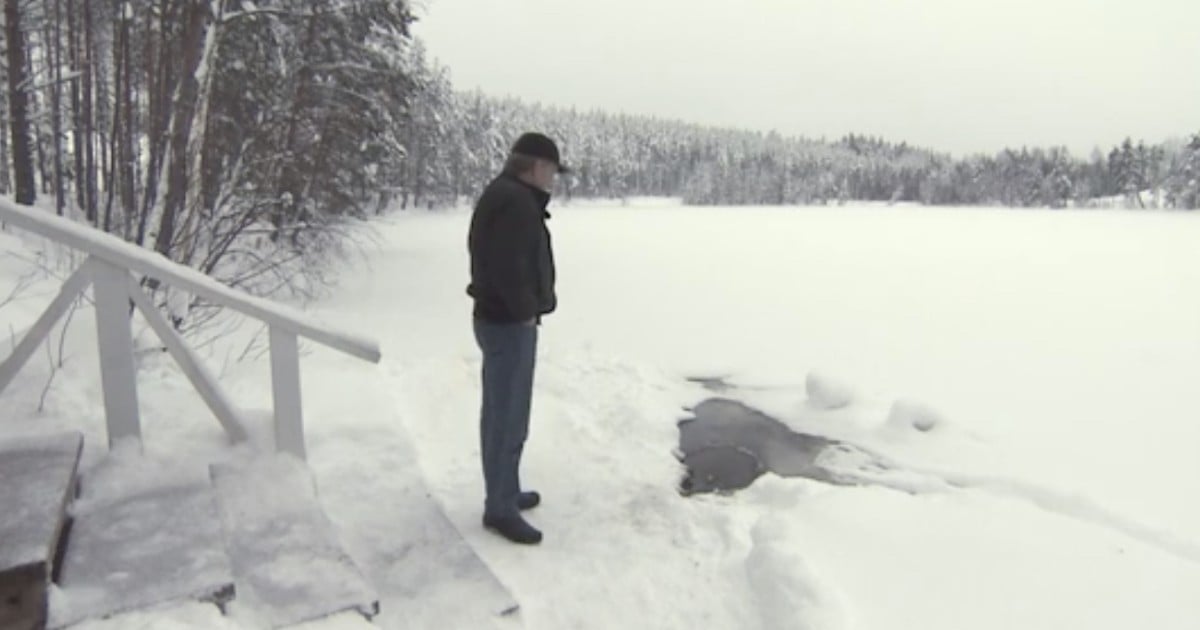Friendships often appear in the most unexpected places. While many people cherish bonds with familiar companion animals such as dogs or cats, there are rare moments in life when nature surprises us with a connection that feels almost like a story from folklore. One such moment took place in the quiet winter landscapes of eastern Finland, where an elderly man formed a heartwarming bond with a wild otter who emerged each day from a lakeside burrow to greet him.

This story, which spread across the internet and captured hearts around the world, serves as a powerful reminder of the many ways humans and animals can connect. Beyond the emotional appeal, it also invites us to reflect on the deeper cultural symbolism of human–animal relationships and the scientific principles that may explain why such unusual bonds form.
In this article, we will explore the touching story of Seppo Laamanen and the otter he named Iivari, the cultural and mythological meaning behind such friendships, and the scientific lens through which researchers study interspecies trust. By blending storytelling with thoughtful analysis, we uncover why stories like this resonate so strongly with people everywhere.
The Story of Seppo and Iivari: A Friendship Born Beside a Winter Lake
In 2011, Seppo Laamanen lived in Punkaharju, a peaceful region in eastern Finland known for its quiet forests and shimmering lakes. His cozy red cottage sat near a small body of water that froze beautifully in winter. It was in this serene setting that Seppo first encountered a small otter making its way across the icy shoreline.
According to accounts shared online, the otter appeared thin and curious, emerging from the frozen water as if searching for food or companionship. Seppo, noticing the animal’s condition, offered fish and small portions of food to support him through the season. Over time, the otter began visiting daily, approaching the cottage with increasing confidence.
Seppo eventually named the otter Iivari. What began as a simple act of kindness blossomed into a routine filled with gentle companionship. Each morning, Seppo walked down to the lake, and soon enough, Iivari would appear from a small hole near the water’s edge. Their quiet moments together—shared outdoors in the stillness of the Finnish winter—became a cherished part of each day.
As trust grew, Iivari even ventured onto Seppo’s porch and occasionally stepped inside the cottage, where a small bowl of food awaited. Although many visitors came to observe this unusual bond, Iivari interacted only with Seppo, suggesting a unique sense of comfort that had developed between them.
Stories like this spread quickly because they celebrate simple gestures of goodwill. They remind us that moments of connection can appear when we least expect them, even between species that rarely interact closely.
Why These Stories Matter: The Cultural and Mythological Significance of Animal Companionship
Human–animal friendships hold a special place in cultures around the globe. In many traditions, wild animals symbolize wisdom, intuition, or harmony with nature. An otter, in particular, carries rich symbolic meaning across various cultures.
Otters in Northern European Folklore
In Finland and other northern regions, otters often appear in folklore as playful, intelligent creatures associated with water, transformation, and adaptability. Their quick movements and curious personalities have inspired stories that portray them as guides or protectors of natural spaces.
The bond between Seppo and Iivari can be viewed through this cultural lens as a meeting point between human life and the living spirit of the lake. Although the real-world friendship is rooted in observable behavior, the story resonates at a symbolic level, reminding people of humanity’s long-standing relationship with the natural world.
Universal Themes of Connection
Across cultures, friendship between humans and animals—even unusual ones—often represents:
-
Compassion: the belief that kindness toward animals reflects kindness toward all forms of life
-
Harmony: the idea that humans and nature can coexist peacefully
-
Curiosity: our enduring fascination with the natural behaviors of wildlife
-
Hope: the sense that companionship can emerge even in quiet, solitary places
Stories like Seppo’s offer comfort and inspiration. They encourage people to appreciate small acts of generosity and to view nature not as something distant but as something we can form a respectful relationship with.
A Scientific Perspective: How and Why Unlikely Friendships Form
While cultural interpretations help us understand why these stories feel meaningful, science offers additional insight. Researchers have long studied interspecies interactions to learn how trust forms between humans and wildlife.
Although the specifics of Seppo and Iivari’s relationship are unique, several general scientific principles can shed light on the behavior observed in similar situations.
Trust Through Consistent, Predictable Behavior
Animals, including otters, often rely on predictability when assessing whether a human or other animal is safe. When a person consistently behaves calmly, provides food, or maintains a non-threatening presence, many animals may gradually view the individual as familiar rather than unknown.
In Seppo’s case, his regular visits to the lakeside and gentle demeanor likely contributed to Iivari’s comfort. Researchers studying wildlife habituation note that repeated positive interactions can gradually reduce an animal’s fear response toward humans.
Food as a Motivator and a Bridge
While friendship is a human concept, food availability is a practical factor influencing animal behavior. Offering food can create a reason for animals to return to the same location. Over time, these repeated interactions can lead to patterns that resemble companionship.
However, experts also emphasize that offering food to wildlife should be approached with care and awareness of local guidelines. In Seppo’s unique situation, the winter conditions and rural setting provided a context in which he could support the otter responsibly.
Cognitive and Social Abilities in Otters
Otters are known for their intelligence, playful personalities, and ability to form social bonds within their own species. Some researchers speculate that these traits may also make them more receptive to forming temporary associations with humans under specific circumstances.
While it would be speculative to describe Iivari’s behavior in human emotional terms, scientists agree that animals can experience forms of curiosity, comfort, and recognition, which may explain why a wild otter might repeatedly visit the same person who treats it with care.
The Emotional Impact: Why Stories Like These Spread Worldwide
In the age of social media, heartwarming animal stories often travel far beyond their original location. The tale of Seppo and Iivari circulated widely because it touches on universal feelings—loneliness, kindness, curiosity, and the desire to connect.
Many people found joy in seeing the otter emerge each day from a lakeside hole to greet the man who had helped him. Others were inspired by the simplicity of the ritual: a quiet walk to the water’s edge, a familiar animal waiting patiently, and a moment of peaceful companionship in a snowy Finnish landscape.
Such stories invite us to imagine what our lives might be like if we paused to observe nature more closely. They encourage acts of kindness and remind us that even the smallest interactions can create meaningful memories.
Looking Beyond the Story: Lessons in Respect and Coexistence
While Seppo and Iivari’s friendship is uplifting, it also offers valuable lessons. It reminds us that while animals can show remarkable adaptability, they are still wild creatures deserving of respect and space. Stories like this work best as sources of inspiration rather than templates to recreate without proper knowledge.
Experts often note that coexistence is most successful when humans:
-
Appreciate wildlife from a respectful distance
-
Follow local environmental guidelines
-
Avoid actions that may disrupt natural behaviors
-
Offer help thoughtfully and responsibly
Seppo’s story demonstrates a mindful approach: quiet, consistent, and respectful. It highlights the beauty of coexistence when handled gently and thoughtfully.

A Reflection on Human Curiosity
At its heart, the story of Seppo and Iivari appeals to something deep within us: the desire to understand, connect, and share moments with the natural world. Whether interpreted through folklore, scientific observation, or personal emotion, this gentle friendship reminds us that curiosity continues to guide our relationship with nature.
We are drawn to stories like this not only because they are touching but because they reflect our ongoing search for meaning in our interactions with the world around us. These connections—however rare or brief—encourage us to appreciate the harmony that is possible between humans and the living environments we are part of.
As long as curiosity remains a central part of our nature, we will continue to find wonder in unexpected friendships, gentle encounters, and the quiet moments that bring us closer to understanding the world.
Sources
-
The Animal Club: www.theanimalclub.net
-
The Telegraph
-
Finnish wildlife behavioral studies (general references
